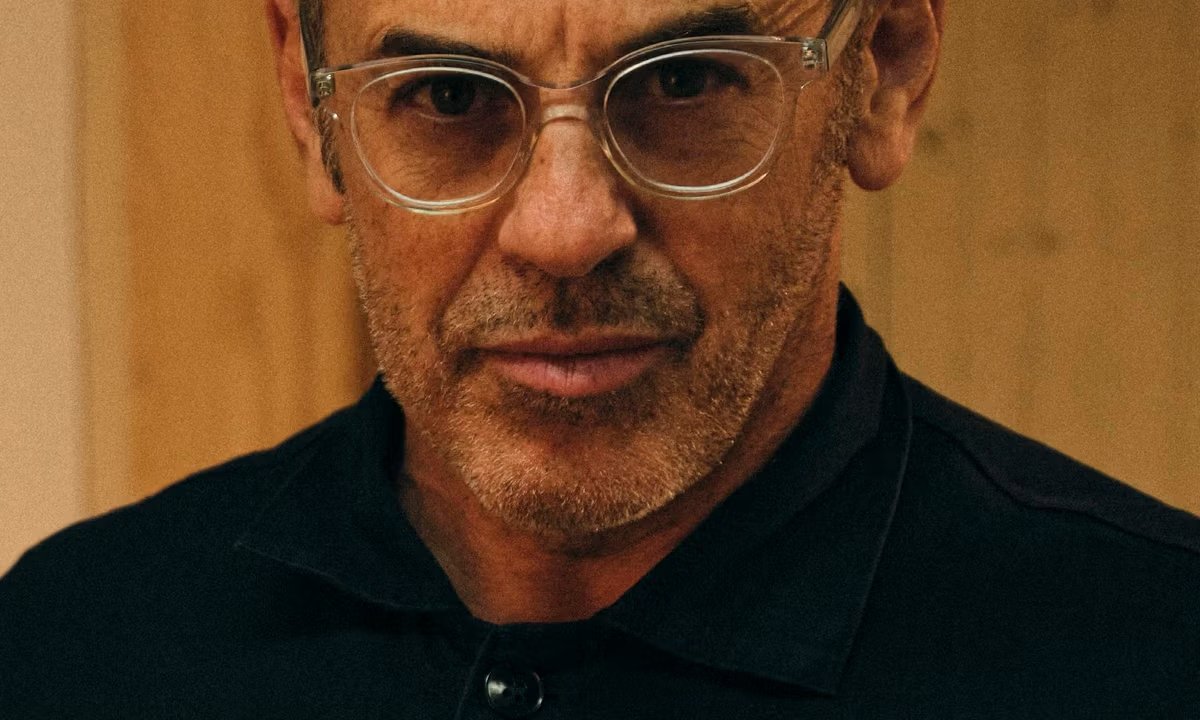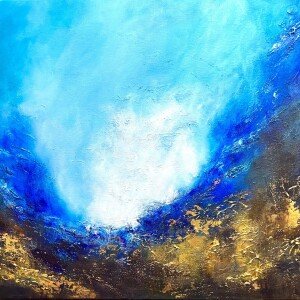
Video: “The Art and Design of Howard Smith” at the Palm Springs Art Museum
Preview “The Art and Design of Howard Smith” at the Palm Springs Art Museum
When the Palm Springs Art Museum opened its long-awaited Howard Smith exhibition this month, it marked both a historic cultural milestone and a farewell to Executive Director Adam Lerner after four transformative years at the helm.
“The Art and Design of Howard Smith,” running until Feb. 23, 2026, showcases the life and dynamic work of the Black artist. Born in Moorestown, New Jersey, Smith moved to Finland in 1962 after co-organizing an international youth exhibition featuring American artists.
This Palm Springs Art Museum — in collaboration with Espoo Museum of Modern Art — retrospective of Smith’s work is not just an ambitious museum project; it serves as a cultural introduction to an American artist who gained his fame abroad. The exhibit will showcase the work of Howard Smith for the first time in the United States since the 1980s.
“This is a Black man who was underrecognized largely because of racism in the U.S. It’s meaningful that the story of modern design is being told from his perspective,” Lerner said.
Lerner, who is stepping down and moving back to Denver after the recent birth of his son, flew back for the opening of what he described as “such an important project for me, for the museum and even for the (art) field.” He and Director of Exhibitions Rachael Faust traveled to Finland, where they explored Smith’s studio, studied his prints and sculptures, and collaborated with the Espoo Museum of Modern Art to build a compelling narrative for the show.
“I started (working) on this exhibition within weeks after moving to Palm Springs four years ago. Even though my son was just born, I’m going to come out for the opening because it feels so meaningful,” Lerner said.
Staging Smith’s work and significance
On Wednesday, May 7, the final touches were being added to the exhibition after a two-week installation period. Faust, Interim CEO and Chief Curator Christine Vendredi, and guest curator Steven Wolf took the The Desert Sun on a behind-the-scenes preview of the exhibition, which includes textiles, ceramics, assemblages and commercial works created by the Black artist who left the United States in the 1960s due to racism and found creative freedom in Finland.
To tell that story through Smith’s art, the team relied on a scale model, on view at the entrance to the exhibition. It went through several modifications over four years to plan the layout, color, spacing and emotional rhythm of the show.
The first room begins with Smith’s textiles and silkscreens and unfolds into a journey through ceramics, wood and additional textiles.
“There was a strong narrative component to this show. The installation may read more like a storybook. It was designed to feel like you’re learning the story of the artist’s life, along with seeing the work divided in a way that allows you to see how it came into fruition in its time,” said Wolf.
One of the most important curatorial decisions involved spacing. The 1985 stoneware piece “Untitled” is displayed alone on one wall. Wolf said the original plan was to group other objects nearby, but it diminished the visual impact. The model was adjusted so it could stand alone.
“There were a couple of situations in which we found that by removing an object, the remaining object just blossomed and became more powerful,” Wolf said.
An immersive aspect of the exhibition is its use of color. Each room has its own distinct palette — pop yellow, lemon yellow, purple, gold and orange appear in various sections. In the central gallery, walls are painted in light shades of green and blue drawn from a 1967 color scheme Smith used in a student housing project in Finland.
“We couldn’t present any of Howard’s large public works, so this was a way of referencing his public presence in Finland,” Wolf said.
Lighting also plays a critical role. It was still being fine-tuned at the time of our visit to suit different materials. Textiles and paper require lower lumen levels. In the central room, the warm lighting contrasts with the green walls to create a cozy feel, though some adjustments were still needed for wooden works.
“Lighting makes art come alive. It can create drama and surprise, but it also needs to respect the fragility of the work,” Vendredi said.
Textiles, ceramics and everyday design as high art
Many of Smith’s works were commercially mass-produced as interior decor for consumers in Finland. This is highlighted in the exhibition’s presentations of his curtains, ceramics and other decorative household objects featuring patterns, designs or shapes that have unique characteristics and aesthetics.
On one wall, the floral pattern on one of the three displayed curtain sheets, “The Makeba Curtain,” was alluring, especially while hanging down in full from a single rod on the wall. This design became a beloved and cultural fixture in Finland upon its release in 1968 and was a tribute to South African singer and civil rights activist Miriam Makeba.
“These aren’t paintings, and we don’t want viewers to experience them that way. When you have them hanging down like this, they seem more in their natural environment. They are meant to flow like that and breathe,” said Wolf.
In one of the two ceramics galleries, Smith’s stoneware pieces are elevated — literally and metaphorically to eye level and resemble being on display at an upscale decor retailer. According to Vendredi, the idea was to present them at eye level to elevate the work and differentiate them from being everyday life objects.
“Some people still tend to segregate arts and crafts from fine art, especially in the commercial realm. But here, we place them at the same level of importance.
The plates, bowls and tile works are arranged as if they are in a design-forward domestic setting on the wall. According to Wolf, it’s a “theatrical display” and the effect is intended to be nostalgic and subversive, a nod to the postwar era when decorative plates were often a family’s only form of artistic expression, which was common in middle-class households.
“They didn’t have paintings, but maybe they had a set of plates with an interesting design. That’s where the family aesthetic was presented,” said Wolf.
Lerner’s vision and legacy
For Lerner, who became executive director of the museum during COVID-19 following positions at two Colorado art institutions, the Howard Smith exhibition is also a symbol of what the museum has become under his leadership.
“Starting off during a crisis is a very lucky thing. It gave me an opportunity to build up an executive team and develop a program that really reflected 21st-century values,” Lerner said.
During his time in the desert, Lerner was committed to deepening community engagement, addressing historical racial exclusions and embracing Palm Springs’ LGBTQ+ identity more publicly than ever before. He also pointed to the museum’s educational initiatives under Chief Education and Community Engagement Officer Luisa Heredia.
“We’ve tried really hard to rebuild trust, especially with audiences of color. Palm Springs presents itself as a luxury paradise, but the Coachella Valley has great disparities. We need to be a place where everybody feels like they are welcome,” Lerner said. “If you answer the question ‘What should a 21st-century museum be?’ The answer is to be reflective of and responsive to its community. In Palm Springs, how can you have an art museum that is not expressive of LGBTQ culture?”
Lerner recently returned to Denver with no firm plans for his career beyond continuing to ask what art can do for communities. So what’s next for the museum? According to a previous statement announcing Lerner’s departure on April 15, the Board of Trustees will do a national search for the position.
PSAM is already preparing for its next chapter. He cited a forthcoming exhibition developed by Vendredi called “Modern Women: The Influencers Who Shaped Palm Springs,” opening on May 24 at the Palm Springs Art Museum and Design Center, featuring overlooked female architects of mid-century Palm Springs. But he also hopes the new programs will continue to “move the dial” for the museum nationally, just as the Howard Smith exhibition will do.
Looking back on his time in the desert and leadership at the museum, he said Palm Springs changed him.
“I learned so much about the fascinating Southern California artistic environment. There is such a rich cultural and artistic life here. We’ve only just seen the tip of the iceberg,” Lerner said.
If you go
What: “The Art and Design of Howard Smith” exhibit
When: May 10, 2025-February 23, 2026
Where: Annenberg Theater at the Palm Springs Art Museum, 101 N. Museum Drive, Palm Springs
Cost: Free admission, but online registration required
More info: psmuseum.org/art/
Brian Blueskye covers arts and entertainment for the Desert Sun. He can be reached at brian.blueskye@desertsun.com.






